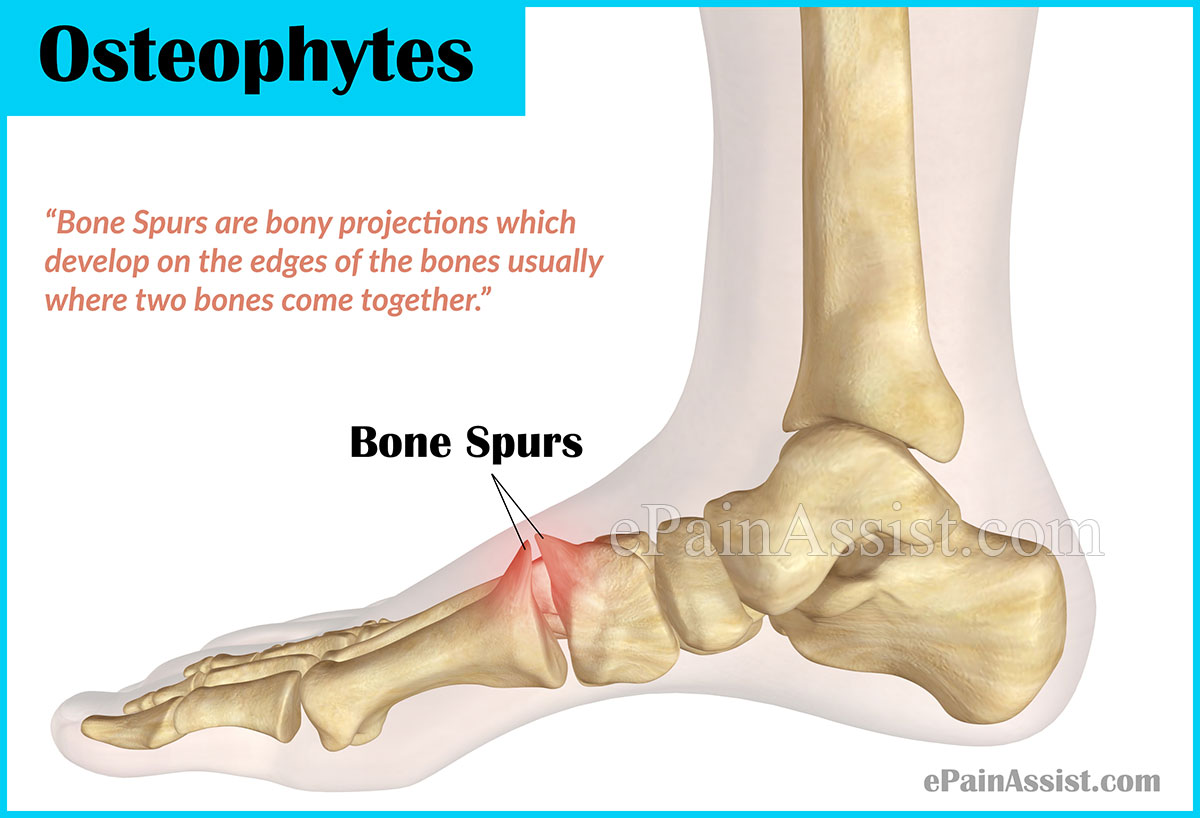What Are Bone Spurs Or Osteophytes?
Bone Spurs are bony projections which develop on the edges of the bones usually where two bones come together.1 Bone Spurs are commonly called as osteophytes. Bone Spurs or Osteophytes are usually caused due to wear and tear of the bones with time or due to an underlying condition called osteoarthritis. They are generally asymptomatic and hence are not able to be diagnosed may be for years. They usually do not require any treatment and any treatment if required solely depends on the affect the Bone Spurs or Osteophytes have on the body of an individual.

What Are The Causes Of Bone Spurs Or Osteophytes?
As stated, wear and tear with time and osteoarthritis are the primary causes of Bone Spurs or Osteophytes.2 Osteoarthritis wears down the cartilage which provides a cushion to the bones and hence the body tries to repair it by creating what is called as Bone Spurs.
What Are The Symptoms Of Bone Spurs Or Osteophytes?
Usually, Bone Spurs or Osteophytes are asymptomatic and are very difficult to diagnose. Usually, they are diagnosed incidentally when radiographic studies are conducted for some other medical condition. Rarely, Bone Spurs or Osteophytes may cause some pain or discomfort along with reduced range of motion of the affected joints. The symptoms of Bone Spurs or Osteophytes are different for different types of joints which are affected. Some of them are:
Knees: If Bone Spurs or Osteophytes are present in the knee joints, then here will be pain in the knee with decreased range of motion of the knee. It may also be discomforting to move the knee smoothly.
Spine: If Bone Spurs or Osteophytes are present in the spine, it can cause spinal canal narrowing. It may also cause spinal cord impingement and nerve root compression causing pain along with numbness and weakness of the extremities.3
Hips: If Bone Spurs or Osteophytes are present in the hips, then it may be difficult for an individual to move the hip without inducing pain. The range of motion of the hip may also get affected by Bone Spurs or Osteophytes.
Shoulders: If Bone Spurs or Osteophytes are present in the shoulders, they can cause irritation of the rotator cuff muscles by rubbing on it resulting in swelling and pain in the shoulders. It may also cause rotator cuff tears.
How Is Bone Spur Or Osteophyte Diagnosed?
To identify Bone Spurs or Osteophytes, the treating physician may conduct a physical examination in order to look for the source of the pain. Bone Spurs or Osteophytes may be felt at times but it is not that common. In order to confirm the diagnosis of Bone Spurs or Osteophytes, the treating physician will order radiologic studies like x-rays of the affected area to look at the joints to see if there are any bony projections which if found will confirm the diagnosis of Bone Spurs or Osteophytes.
What Are The Treatments For Bone Spurs Or Osteophytes?
As stated, Bone Spurs or Osteophytes are usually asymptomatic and generally no treatment is required. In instances when these Bone Spurs or Osteophytes start causing pain in the joints then the treating physician may prescribe OTC pain medications like ibuprofen or Aleve. In case, the range of motion of the joint gets affected then a surgical procedure may be required to remove the Bone Spurs or Osteophytes.
Also Read:
